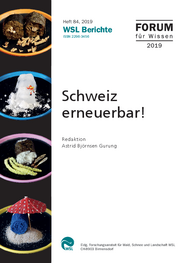Schweiz erneuerbar!

Auteurs:
Astrid Björnsen Gurung
Collection:
WSL Berichte
84
Année de parution:
2019
Taille:
45 Pages
Télécharger
Citation:
Björnsen Gurung A. (Ed.) (2019) Schweiz erneuerbar!. WSL Berichte 84. Forum für Wissen 2019Birmensdorf: Eidg. Forschungsanstalt für Wald, Schnee und Landschaft. 45 S. doi.org/10.55419/wsl:21910
Langues disponibles:
